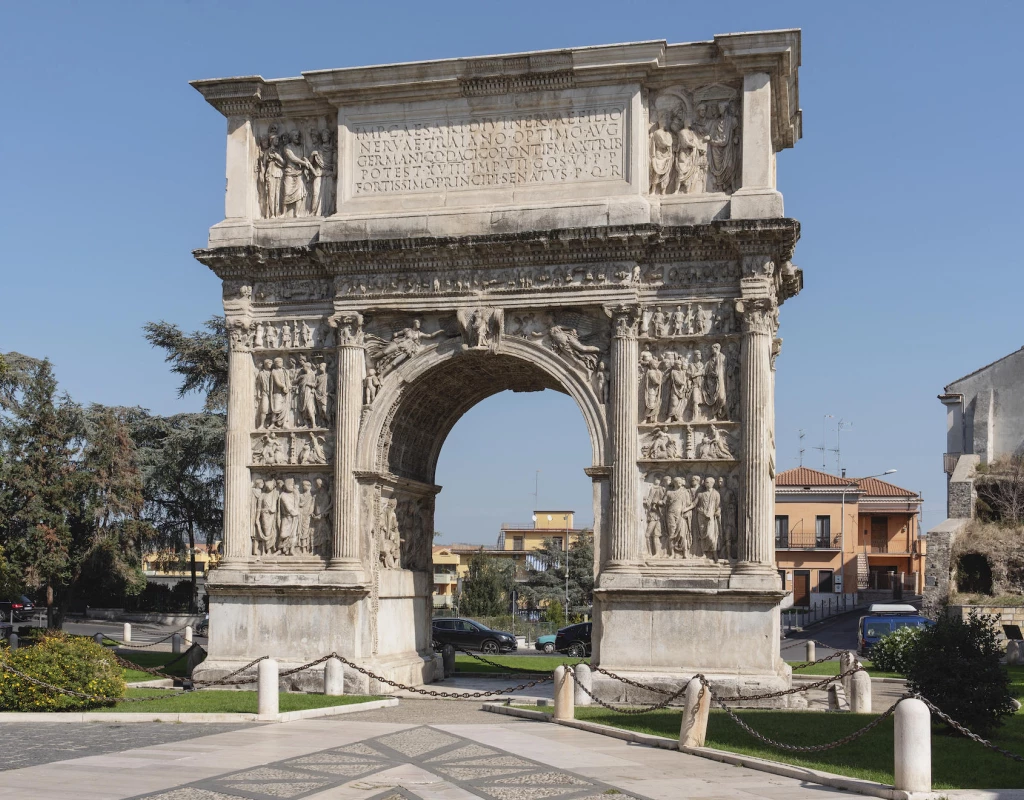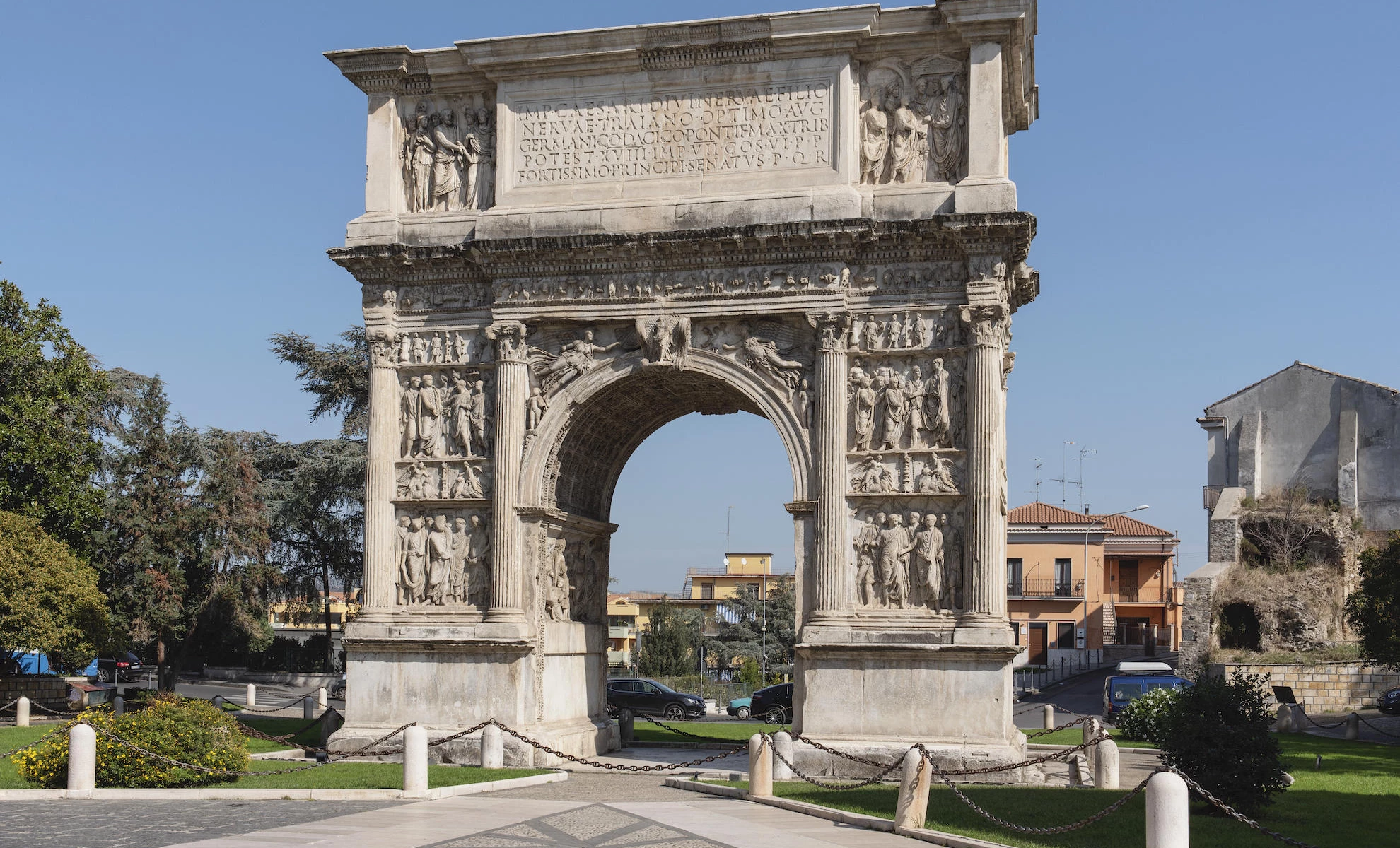It was originally Maleventum, “Bad wind”. Following the Samnite wars it was conquered by the Romans and officially became a province of the Empire, a crucial hub of trade and commerce. So that name, considered baleful, was changed to Beneventum.
Ph. Anna Monaco - Trentaremi
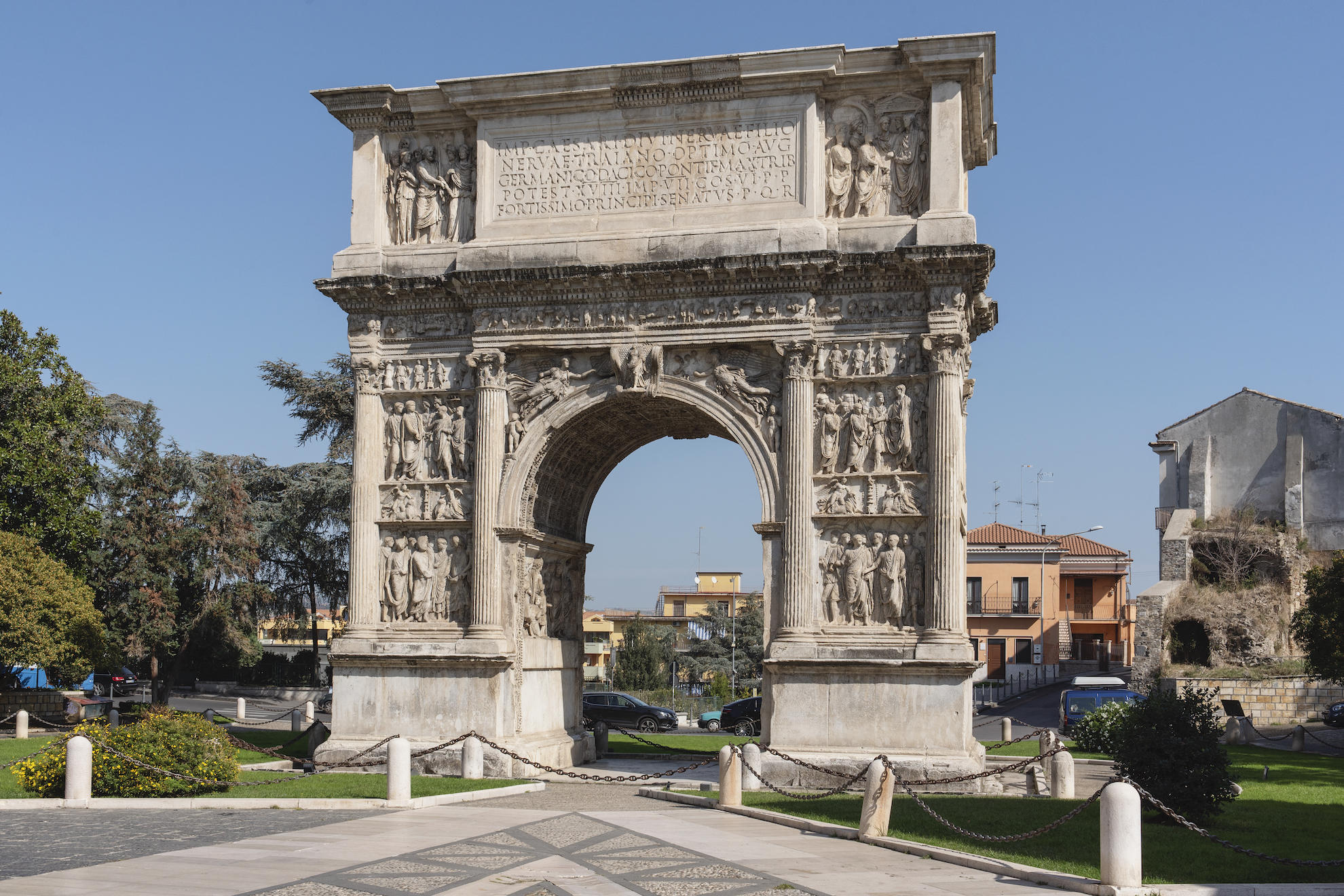
“Good wind”. Today we call it Benevento, the Campania city that was a crossroads of peoples and traditions: Lombards, Samnites, Romans, even the Popes. Benevento is a city of history. Anyone who arrives here is greeted by a splendid monumental arch, dating back to the second century AD: the Arch of Trajan. Symbol of the city, the Arch represents one of the best preserved Roman finds in Italy, both for having resisted the wear and tear of time and the vicissitudes of history, and for the will of men who restored it over time.
When was the Arch of Trajan born? Let's jump into the past and go back to that second century AD. When Emperor Trajan, the Optimus Princeps, stood out in his qualities as general and administrator, he decided that a new route should start from Benevento, as an alternative to the Appia Antica, the queen of the main routes. Stone after stone, after two years of work in 110 AD, Via Traiana was born, so named in honor of its founder, which was to arrive in Brindisi. But a road always has a door, imaginary or real. That of the Via Traiana was built, again by the Optimus, between 114 and 117 AD.
Ph. Anna Monaco - Trentaremi
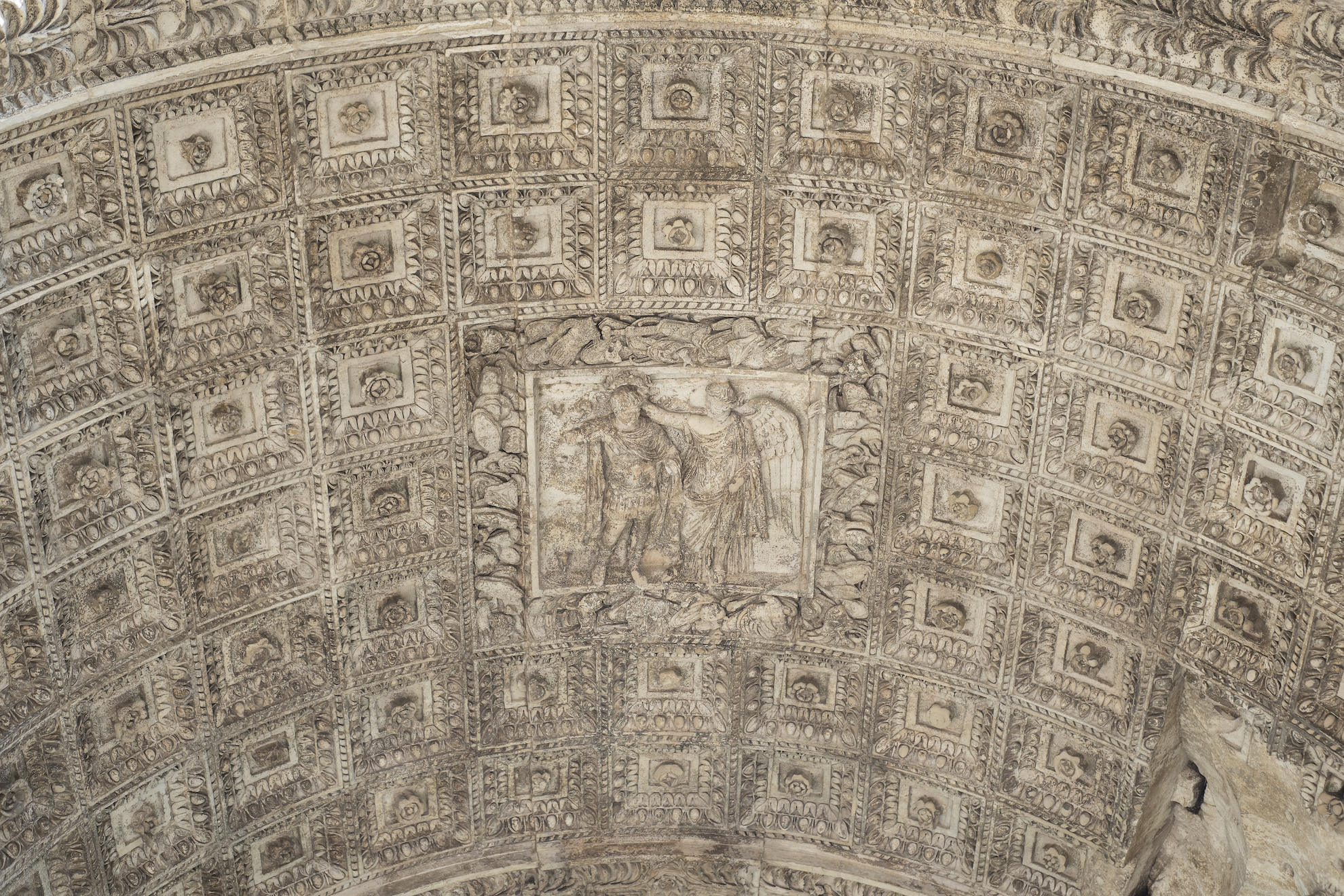
Made up of large limestone blocks covered with marble for a height of just over fifteen meters and an arch of eight meters, the door was given the shape of an arch and it was baptized as Arco di Traiano. In the upper part of the monument, on the marble, an epigraph is carved:
Imp[eratori] Caesari divi Nervae filio Nervae Traiano optimo Aug[usto] Germanico Dacico Pontif[ici] Max[imo] trib[unicia] potest[ate] XVIII impe[eratori] VII co[n]s[uli] VI P[atri] P[atriae] Fortissmo Principi Senatus P[opulus]q[ue] R[omanus]
“To Emperor Caesar, son of the divine Nerva, Nerva Trajan, Excellent Augusto Germanico Dacico, Pope Maximus, invested with the tribunal power eighteen times, chosen emperor seven times and consul six, Father of the Homeland, Powerful Prince, the Senate and the Roman people (placed)”
The Arch was in fact the door of the Via Traiana but was dedicated to the Emperor Marco Ulpio Traiano. On each side of it different scenes are described with different symbolic value. The internal part of it, towards Benevento and its citizens, represents peace and wealth. The external one, which looks at the countryside, tells the story of Trajan's winning deeds in the provinces. The internal parts of the archway describe instead the activities of the emperor in the city of Benevento: on the left, the starting point of the Via Traiana, on the right, however, the institution of the “alimenta” (feeds), a provision with which Trajan donated part of his personal assets to poor children. Finally, on the ceiling coffers of the vault of the Arch, a Victory crowning the Emperor is illustrated.
Ph. Anna Monaco - Trentaremi
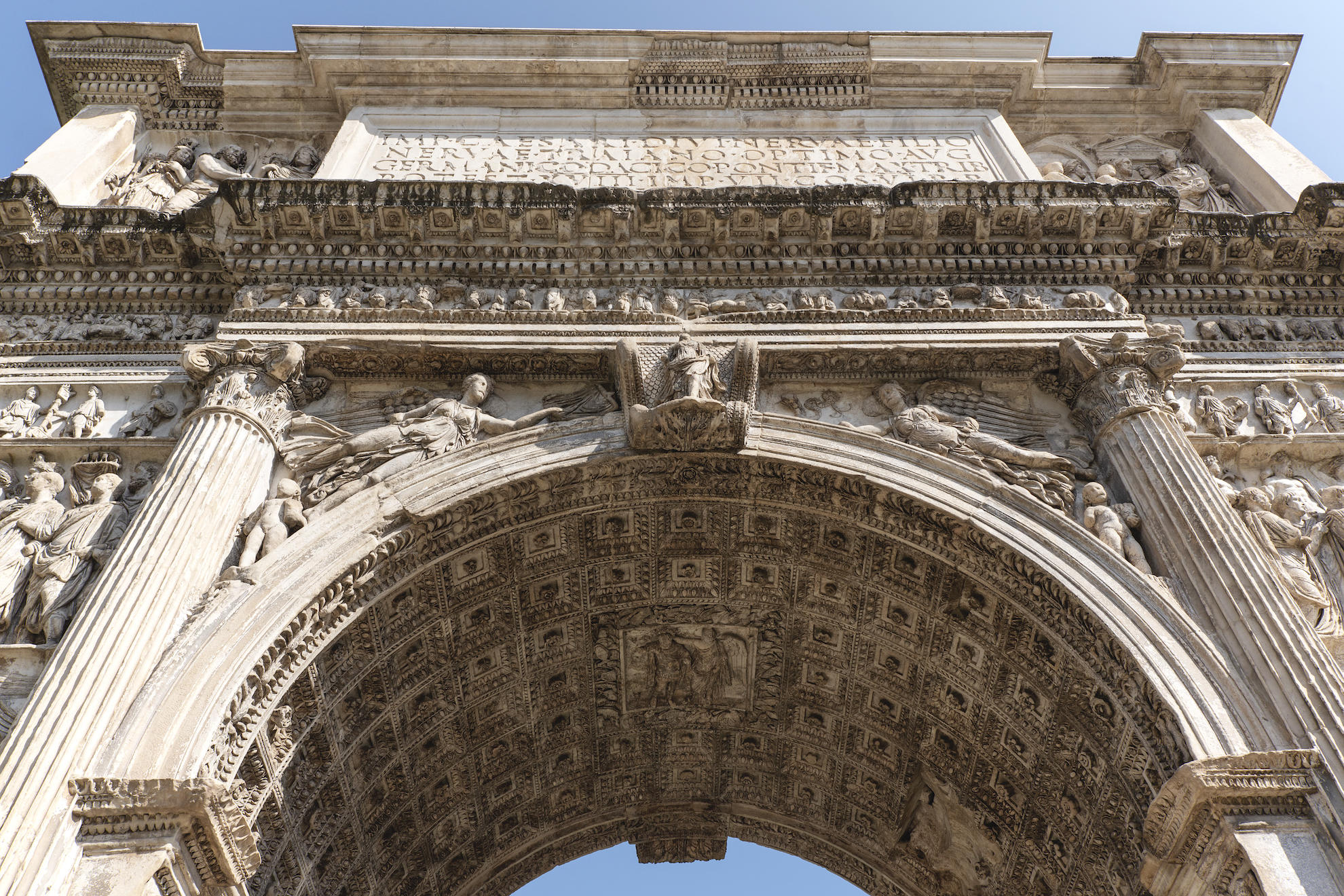
In the Lombard era, the Arch became the Golden Gate, to protect the historic center of Benevento, and took on the symbolic value of the city pass. Survived the earthquakes and time, the Arch became a monument on the occasion of the visit to the city of Pius IX and then, over time, it went through several restoration works until the last, that of 2002, which gave light to the marble that covers it.
